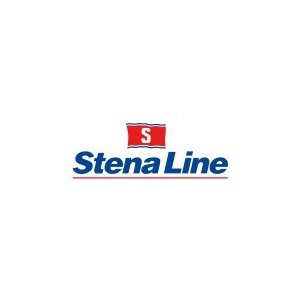Stena Line - Experts & Thought Leaders
Latest Stena Line news & announcements
PPG has announced its 50th order for the electrostatic application of marine fouling control coatings. The project will be carried out on the VLCC SIDR, a 336-metre oil tanker operated by Bahri Ship Management at the Asyad Drydock Company shipyard in Oman, using PPG NEXEON™ 810 antifouling coating on the hull. Electrostatic coating applications Leveraging decades of experience in the aerospace and automotive industries, PPG introduced electrostatic coating applications to the shipping industry just over a year ago. Electrostatic application provides an increased transfer efficiency compared to airless spraying, resulting in sustainability benefits including significant reductions in overspray and waste. PPG has optimised its hull coatings for this application technique. Environmental regulations “Ship owners and shipyards are looking for innovative solutions to comply with stricter environmental regulations and meet their sustainability goals – these include low-friction hull coatings that reduce vessel greenhouse gas emissions and provide sustainably advantaged application procedures,” said Sijmen Visser, PPG Sales Director, Marine EMEA, Protective and Marine Coatings. Sijmen Visser adds, “Electrostatic application is quickly being adopted by large shipping companies and by shipyards in Europe, Singapore and China.” Conventional fouling control coatings Electrically charged paint particles are precisely guided toward the grounded surface of the vessel Conventional fouling control coatings are generally not suitable for electrostatic applications. However, the formulation of both PPG Nexeon antifouling and PPG SIGMAGLIDE® fouling release coatings allow them to be sprayed electrostatically. Electrically charged paint particles are precisely guided towards the grounded surface of the vessel, leading to an exceptionally even distribution and the formation of a uniform and ultrasmooth, long-lasting film layer. Performance indicators “We strive to conduct our business sustainably and constantly measure our environmental impact through performance indicators,” said Khalid Alhammad, Ship Management President at Bahri. Khalid Alhammad adds, “A cornerstone of our environmental strategy is to reduce carbon emissions of our entire fleet. To achieve these objectives, we constantly adopt the latest technologies in hull coating that would help reduce vessel emissions. Combining that with a sustainable coating application technique makes it an attractive combination to us.” PPG Sigmaglide coating In a recent project, EDR Antwerp shipyard confirmed a 40 percent reduction in overspray with the electrostatic application of PPG Sigmaglide coating on a RoRo passenger vessel from Stena Line. With reduced overspray, the electrostatic application provides a cleaner operation and improved work environment for the applicators compared to airless spraying. Shipyards spend less time masking the vessel and cleaning the dock, saving time and costs.
Watson Farley & Williams (WFW) advised Attica Holdings S.A. (Attica) on the negotiation of bareboat charter documentation with Stena International S.A. (Stena) for two E-Flexer vessels being built by Stena at the China Merchants Jinling Shipyard (Weihai) Co., Ltd with a purchase option. Delivery is scheduled for April 2027 and August 2027. RoPax vessels The two new vessels with an overall length of 240m, are the largest RoPax vessels ever ordered by a Greek shipping company. With a passenger capacity of 1,500 pax and 3,320 lane metres cargo decks (approximately 200 freight units) each for the transportation of private vehicles, trucks, and trailers, they significantly enhance Attica’s fleet capacity. Optimising fuel consumption This agreement acts as a landmark in the Greek ferry industry as the new vessels are methanol ready and carry a battery notation, with engines designed to operate with three different fuel types for future flexibility and state-of-the-art technology to optimise fuel consumption. This will reduce Attica's overall environmental footprint through fleet renewal by cutting GH emissions per transport work by 60% compared to existing vessels. Design tailored vessels Attica is a ferry services operator for passengers and cargo across the Eastern Mediterranean Attica is a ferry services operator for passengers and cargo across the Eastern Mediterranean. Serving 60+ destinations and connecting 67 ports in Greece and recent years has expanded also in the hospitality sector. Stena is a provider of roll-on/roll-off cargo and passenger services through RoRo and RoPax vessels and associated services. They are highly skilled and experienced in designing and converting vessels tailored precisely to their clients’ needs. New standards for the Greek ferry The WFW Athens Assets & Structured Finance team that advised Attica was led by Partner Christina Economides and supported by Senior Associate Haris Kazantzis. Christina commented, “We are very happy to have assisted Attica on this landmark project. The successful completion of this transaction for Attica sets new standards for the Greek ferry industry.”
PPG announced that EDR Antwerp shipyard achieved a 40 percent reduction in overspray with the electrostatic application of PPG SIGMAGLIDE® 2390 fouling release coating. The project was carried out on the underwater hull of the RoRo passenger vessel Stena Transporter from Stena Line and is the second successful electrostatic application project for EDR. PPG Sigmaglide coating Electrostatic application has increased transfer efficiency compared to airless spraying Electrostatic application has increased transfer efficiency compared to airless spraying, resulting in reductions in overspray and waste, and combined with the low VOC emissions of PPG Sigmaglide coating, provides cleaner operation and an improved work environment for the applicators. The chemical composition of both PPG Sigmaglide fouling release coating and PPG NEXEON™ 810 antifouling coating make them suitable for application using the electrostatic process. Charged paint droplets “Electrostatic application increases the weather window in which painting activities can take place, as well as reducing overspray significantly,” said Philippe Trouillard, Commercial Manager, EDR. Philippe Trouillard adds, “It’s impressive to see how the charged paint droplets are attracted to the vessel surface almost like a magnet. You only have to look at the dock floors at the end of the project to see how much paint has been saved from disappearing into the environment. Due to a cleaner operation, we have spent less time masking the vessel and covering the dock, saving valuable time and costs.” Concept of electrostatic application “Ship owners and shipyards are being encouraged to look for innovative solutions in order to comply with stricter environmental regulations and meet their sustainability goals,” said Sijmen Visser, PPG Sales Director, Marine EMEA, Protective and Marine Coatings. Sijmen Visser adds, “We see an increased demand not only for biocide-free and copper-free hull coatings to reduce vessel emissions, but also for more sustainable application procedures by yards. We strongly believe in the sustainable concept of electrostatic application and are promoting the concept in shipyards in Europe, Singapore and China.”
Insights & Opinions from thought leaders at Stena Line
As regulations on emissions become more stringent, more companies and organisations in the maritime industry will likely start to use methanol as a cleaner and more sustainable fuel. Methanol Methanol is a promising alternative fuel for the maritime industry due to its potential to reduce greenhouse gas emissions, increase energy security, and improve air quality. The future of methanol as a maritime fuel depends on several factors, including regulatory policies, technological advancements, and the availability and cost of methanol. Production One of the main advantages of methanol as a maritime fuel is that it can be produced from a variety of renewable and non-renewable sources, such as natural gas, coal, and biomass. Methanol can be produced using CCU technologies, which can help reduce the carbon footprint Methanol can also be produced using carbon capture and utilisation (CCU) technologies, which can help reduce the carbon footprint of the maritime industry. In addition, methanol is relatively easy to transport and store, making it an attractive option for use in marine vessels. Availability Methanol can be stored at room temperature and can be transported using existing infrastructure, such as pipelines and tankers. The availability of methanol at ports is an issue. In 2020, the Methanol Institute confirmed that methanol is already available in more than 100 ports around the globe and that 47 of those ports have storage facilities of over 50,000 metric tons. A further 66 ports are also storing methanol. Use of methanol in reducing GHGs Methanol can reduce greenhouse gas emissions and meet new emissions regulations when used as a marine fuel in various ways, including: Blending with marine diesel oil (MDO): Methanol can be blended with MDO to produce Methyl Diesel Fuel (MDF). MDF can be used in compression ignition engines that typically run on MDO or heavy fuel oil. Direct injection: Methanol can also be used as a direct injection fuel. In this case, methanol is injected into the engine’s combustion chamber and burned as the primary fuel. Methanol can be used in both spark-ignited and compression-ignited engines. Dual-fuel engines: Methanol can also be used in dual-fuel engines. In this case, methanol is injected into the combustion chamber along with another fuel, such as diesel. Diesel acts as the pilot fuel to ignite the methanol, which is burned as the primary fuel. Pros and cons Methanol is highly toxic and flammable, so it requires careful handling and storage to ensure safety One advantage of using methanol as a maritime fuel is that it has a high-octane rating, which can improve engine performance. Methanol is also relatively easy to produce, and it can be made from renewable sources such as biomass. However, methanol is highly toxic and flammable, so it requires careful handling and storage to ensure safety. Environmental benefits Methanol has several environmental advantages over traditional maritime fuels such as heavy fuel oil and marine diesel oil. These advantages include: Lower greenhouse gas emissions: Methanol has a lower carbon content than traditional maritime fuels, which means it produces fewer greenhouse gas emissions when burned. Methanol can reduce greenhouse gas emissions by up to 15% compared to traditional fuels. Reduced air pollution: Methanol also produces fewer emissions of harmful air pollutants such as nitrogen oxides (NOx) and particulate matter (PM) when burned. Methanol can reduce NOx emissions by up to 60% and PM emissions by up to 95% compared to traditional fuels. Biodegradability: Methanol is biodegradable, which means it can break down naturally in the environment. This is important in case of any accidental spills or leaks that may occur during fuel handling and transportation. Renewable source: Methanol can be produced from renewable sources such as biomass, which means it can be a sustainable alternative to traditional maritime fuels. Energy efficiency: Methanol has a high energy content per unit of weight, which means it can provide more energy per unit of fuel compared to traditional fuels. This can lead to improved energy efficiency and lower fuel consumption. Maritime applications Stena Line has converted one of its ferries, the Stena Germanica, to run on methanol Overall, using methanol as a maritime fuel can help reduce the shipping industry's environmental impact and promote more sustainable and responsible practices. Several companies and organisations have started using methanol for maritime applications. Stena Line, a Swedish ferry operator, has converted one of its ferries, the Stena Germanica, to run on methanol. The ferry operates between Kiel, Germany, and Gothenburg, Sweden. Nominal capacity In addition, Maersk Line, the world's largest container shipping company, has announced plans to use methanol as a marine fuel. In October 2022, Maersk announced it has ordered a further six large ocean-going vessels that can sail on green methanol. The six vessels will be built by Hyundai Heavy Industries (HHI) and have a nominal capacity of approximately 17,000 containers (Twenty Foot Equivalent - TEU). They will replace the existing capacity in the Maersk fleet. With the order, Maersk has in total ordered 19 vessels with dual-fuel engines able to operate on green methanol. Methanol engines MAN Energy Solutions, a provider of marine engines, has developed methanol engines for use in maritime applications. The engines can be used in both propulsion and auxiliary power applications. Methanol-based two- and four-stroke solutions will be relevant for the complete MAN Energy Solutions marine engine portfolio. Typical examples of the application of four-stroke engines include container ships, ferries, fishing or cruise vessels, as well as offshore solutions. Future adoption Adoption of methanol will depend on cost, availability, and the development of regulatory frameworks Stationary solutions might also be a possible area for methanol applications, for example, for small islands that lack natural gas infrastructure. However, the wider adoption of methanol as a maritime fuel will depend on several factors, including the cost of methanol production, the availability of methanol infrastructure, and the development of regulatory frameworks to support its use. Nevertheless, the future of methanol as a maritime fuel looks promising, as it offers a potential solution to the maritime industry's environmental and energy security challenges. Flexible in use Battery electric propulsion is another potential alternative to traditional maritime fuels, but it is limited by the current state of battery technology, which makes it difficult to achieve long-distance, large-scale shipping operations. Methanol can offer a longer range and greater flexibility than battery electric propulsion while still reducing emissions. Overall, while methanol is not a perfect solution, it offers several advantages over other maritime fuels and has the potential to play a significant role in reducing the environmental impact of the shipping industry.


































